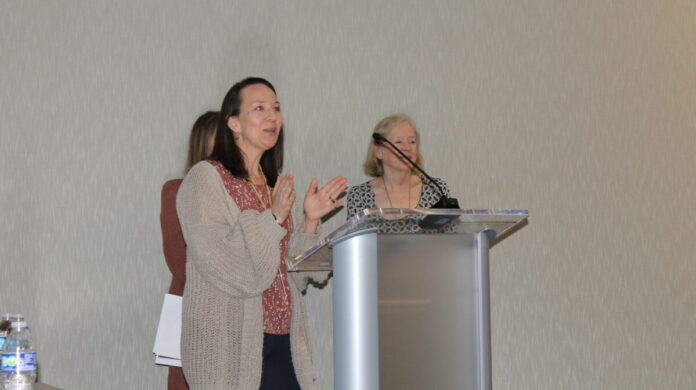
Even now, four years after the COVID-19 pandemic amplified existing mental health challenges for the youth across the U.S., a team of professionals in Habersham County’s School System remain committed to destigmatizing the issue altogether.
On average, about one of five adolescents experience mental health concerns.
A group of specialists, now in their seventh year at Habersham County’s School System, briefed board of education members on their ongoing work to address mental health of students at a work session Thursday, Feb. 6.
“I feel like we can’t talk about (safety) without talking about mental health,” mental health specialist Angie Kerr said. “Mental health is definitely at the core of a lot of what we do. We know it’s hard for students to learn when they have poor mental health – research tells us this.”
In presenting to board members, the team laid out their “5 E’s to a successful school mental health system of support.”
- Establish
- Expand
- Evolve
- Educate
- Empower
In their work within the county’s school system, all three specialists appear to be doing just that.
At first, according to Kerr, the team had acted independently before they soon learned it was more efficient to approach issues of mental health as a team.
“From the beginning, we knew we wanted to establish a program to reach all students,” Kerr said. “Everyone has mental health, and we want to make sure we’re accessible to all.”
Specialists said top issues for students in Habersham include barriers to transportation and health insurance, low self-esteem, depression, identity challenges from social media as well as socioeconomic inequities that create disparities among lower-income households. The team has since sought to solve those issues, collectively. Those efforts often vary, they said, based on the individual needs of the student and the school.
“We know that every school is different,” mental health specialist Kelsey Ondriezek said, adding that the team has sought to bolster community partnerships. “Every school has a unique culture and different needs, so we want to make sure – as we’re continuing to build and develop our mental health program – that it’s responsive to what a school needs.”
Much of the work the specialists do involves group dialogue on subjects like skill-building, mental health initiatives, understanding emotions and coping mechanisms, according to Ondriezek.
“The purpose of that is not only to impact the student positively. But hopefully, they can bring that into their classroom and they bring those changes into the home as well, and it sort of creates this ripple effect between the whole community,” she said. “Our goal in doing that is creating a school culture that is supportive of mental health.”
Mental health in schools
Kerr said that while the pandemic did intensify struggles of mental health among the youth, efforts of destigmatization also have magnified a focus on the subject in general.
“I think the research is telling us that it’s going to continue,” Kerr said. “I think we, as a nation, are doing more to address mental health, especially in schools…I think there’s been a lot of mental health issues that have stemmed from the pandemic, but I also think it’s us being able to eliminate that stigma and being able to talk about it.”
Ondriezek said that widespread isolation created by the pandemic naturally compounded mental health challenges that likely already existed.
“We know that isolation worsens any existing mental health conditions,” she said. “If you throw anybody into a situation when you’re having to spend more time alone, that’s obviously going to exacerbate anything that was already underlying, so I think that played a big role.”
Now, with the efforts of the team, students no longer have to “suffer in silence,” Ondriezek said.
“Those kids that missed out on the social skills opportunities (during the pandemic) are now struggling at older ages with that…they turn to their phones and they isolate themselves even further, so we tend to see that a lot,” Kerr said.
Specialist Miriam Duncan said that while there are counselors who do very positive work with students on social/emotion learning on an individual level, the team is able to offer an inclusive approach to ensure all students’ mental health needs are met.







